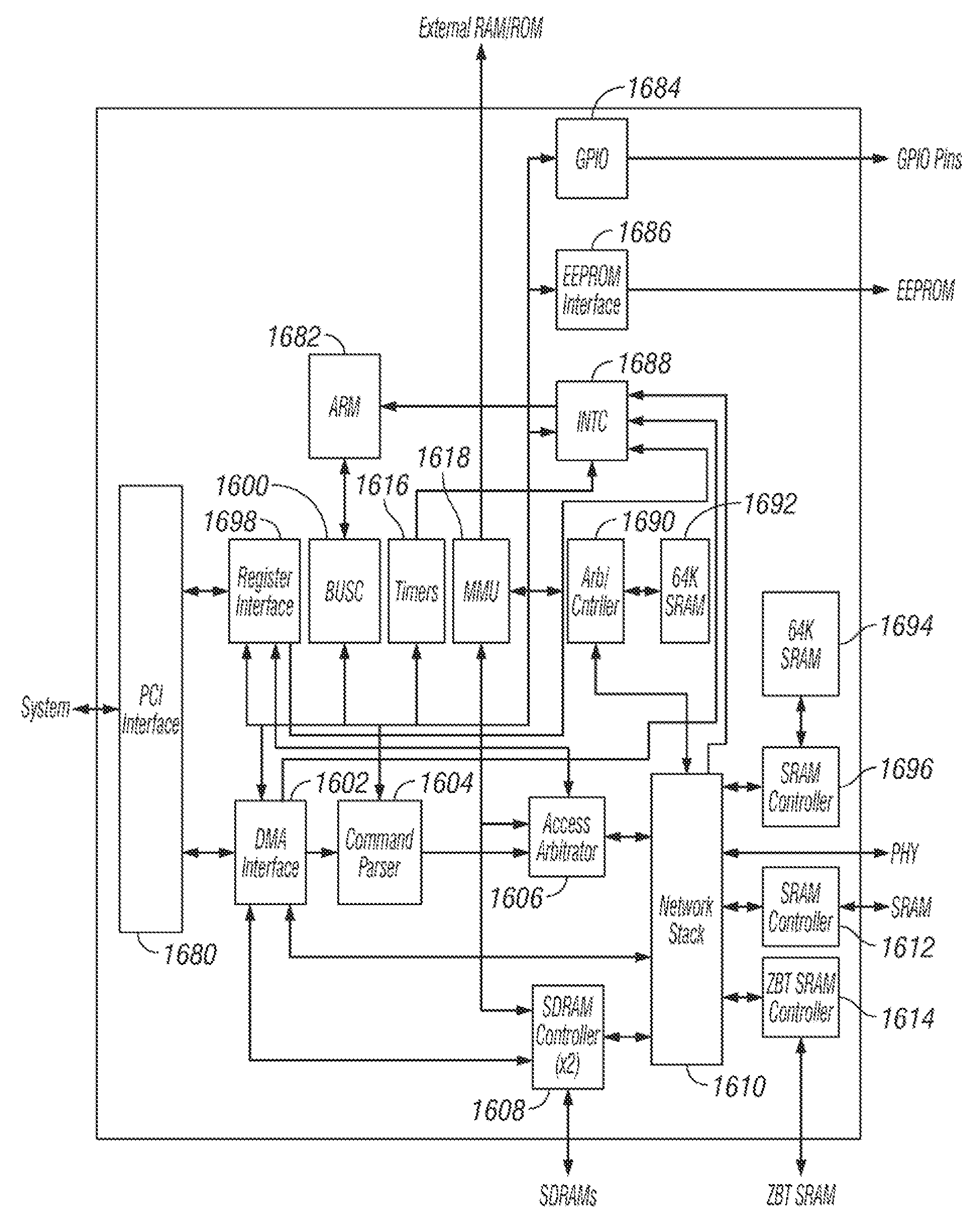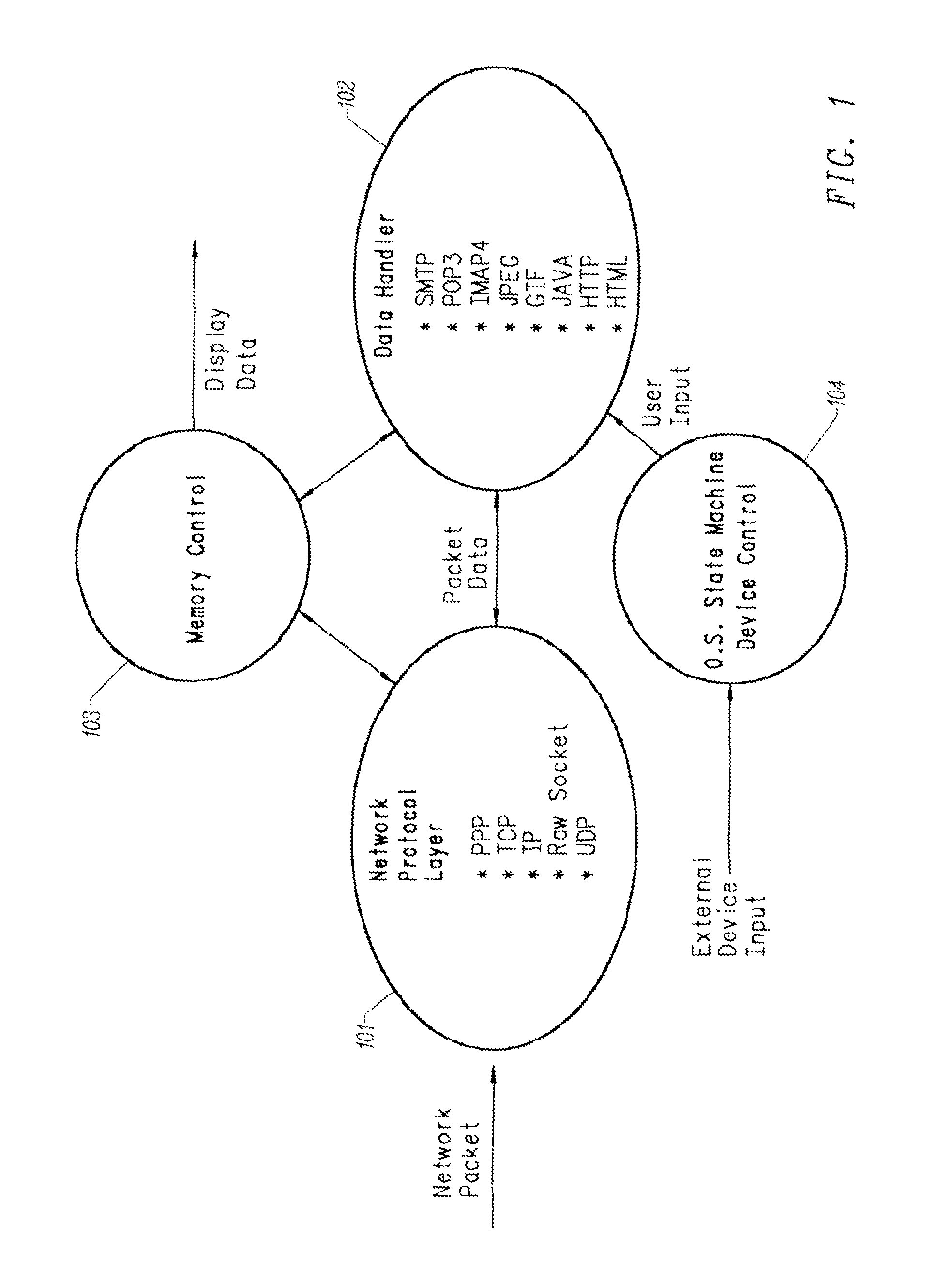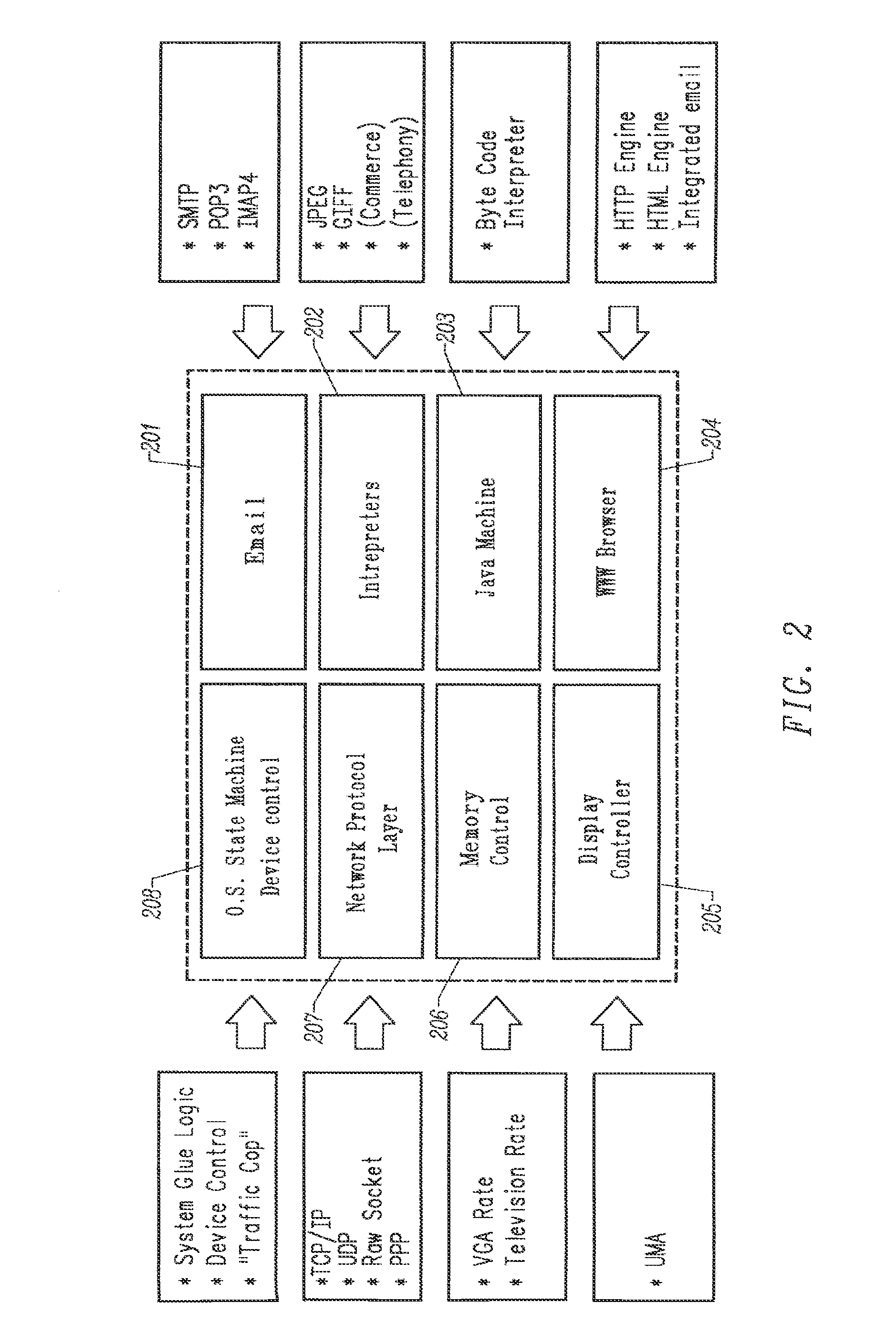Gigabit ethernet adapter
a gigabit ethernet and adapter technology, applied in the field of telecommunications, can solve the problems of high processing overhead, large system memory, and high processing overhead required to process protocols, and achieve the effects of low power consumption, small form factor and low cos
- Summary
- Abstract
- Description
- Claims
- Application Information
AI Technical Summary
Benefits of technology
Problems solved by technology
Method used
Image
Examples
Embodiment Construction
[0064]The invention is embodied in a gigabit Ethernet adapter. A system according to the invention provides a compact hardware solution to handling high network communication speeds. In addition, the invention adapts to multiple communication protocols via a modular construction and design.
[0065]Referring to FIG. 1, the invention comprises a Network Protocol Layer 101, a Data Handler 102, a Memory Control module 103, and an Operating System (O.S.) State Machine module 104, each implemented at the hardware gate level. The Network Protocol Layer 101 decodes incoming and encodes outgoing network packets. The Network Protocol Layer 101 comprises a plurality of state machines representing different network protocol stacks (i.e. PPP, TCP, IP, UDP, and Raw Socket) which simultaneously decode incoming network packets. The implementation of the protocol stacks in gate level logic allows the real time decoding of the network packet as the packet is received, thereby requiring no temporary mem...
PUM
 Login to View More
Login to View More Abstract
Description
Claims
Application Information
 Login to View More
Login to View More - R&D
- Intellectual Property
- Life Sciences
- Materials
- Tech Scout
- Unparalleled Data Quality
- Higher Quality Content
- 60% Fewer Hallucinations
Browse by: Latest US Patents, China's latest patents, Technical Efficacy Thesaurus, Application Domain, Technology Topic, Popular Technical Reports.
© 2025 PatSnap. All rights reserved.Legal|Privacy policy|Modern Slavery Act Transparency Statement|Sitemap|About US| Contact US: help@patsnap.com



